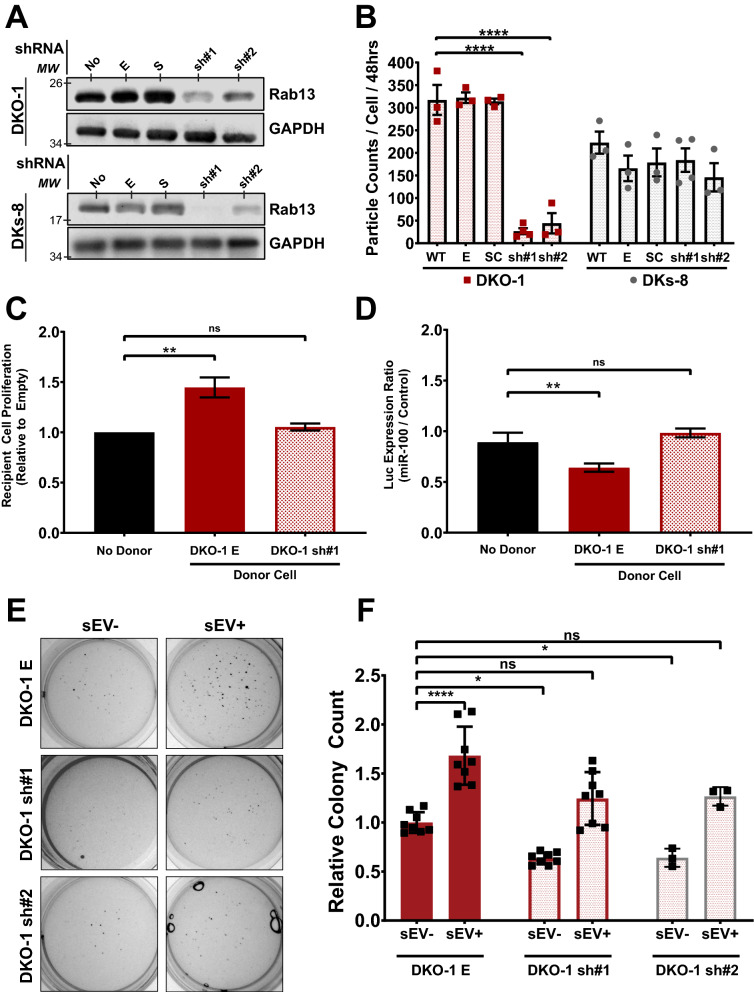Figure 1.
Rab13 regulates EV secretion in a KRAS-dependent manner. (A) Rab13 knockdowns. Stable lines expressing one of two independent shRNAs targeting Rab13 were created in wild type (DKs-8) and mutant (DKO-1) KRAS cells. Western blots were performed on cell lysates using antibodies against Rab13 or GAPDH on the parent cell lines (WT) or lines expressing an empty shRNA vector, a scrambled shRNA vector, or sh#1 or sh#2 against Rab13. (B) Nanosight-tracking analysis (NTA) of sEVs isolated from the cell lines outlined in (A). (C) Proliferation assays. DKs-8 recipient cells were co-cultured for 48 h in the presence of either no donor cells, donor DKO-1 cells expressing an empty shRNA vector (E), or donor DKO-1 cells stably expressing sh#1. Recipient cells were then collected and total cells were counted and plotted relative to the number of cells counted in the absence of any donor cells. (D) Luciferase reporter assays. DKs-8 recipient cells were transiently transfected with a vector expressing luciferase fused to a control 3′ UTR or a 3′UTR containing three perfect binding sites for miR-100. Recipient cells were then co-cultured for 48 h with either no donor cells, donor DKO-1 cells expressing an empty shRNA vector (E), or donor DKO-1 cells stably expressing sh#1. Cell lysates were prepared and luciferase expression was measured with decreased luciferase expression representing more transfer of miR-100. (E) DKO-1 cells with or without Rab13 knockdown were grown in soft agar for 2 weeks in the presence or absence of sEVs purified from DKO-1 cells. (F) Quantification of colony counts from three biological soft agar assay replicates. Significance was determined by one-way ANOVA. *p < 0.05, **p < 0.01, ****p < 0.0001. Data represent mean ± SE, n = 3. Ns no significance.

